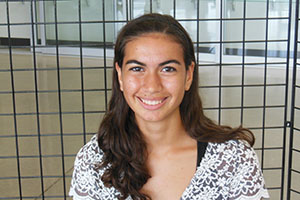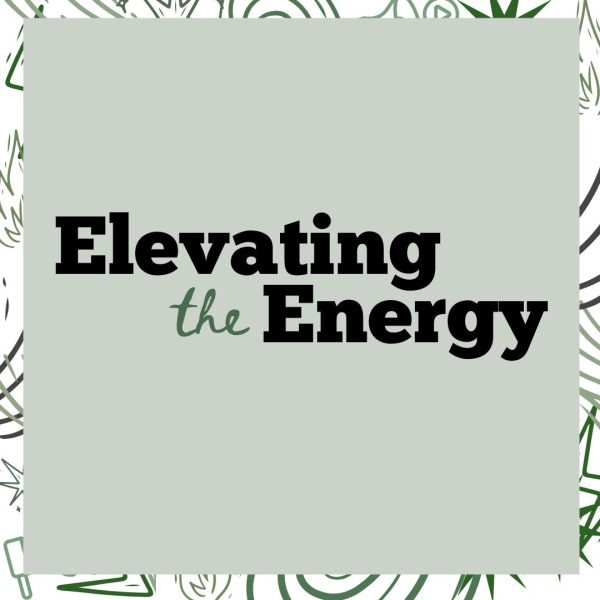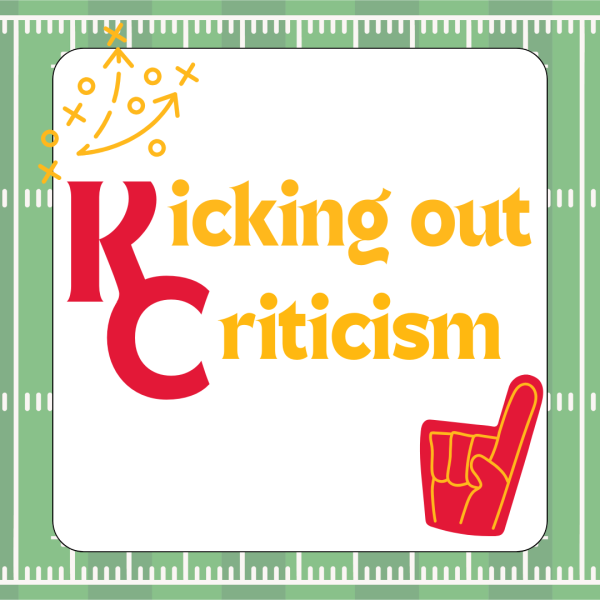Students earn volunteer hours without helping the community

Once a month, senior Kayla Gruenhaupt packages boxes of food through Harvesters and distributes them to people in need. The same day, a KAY club member swings by the grocery store to buy a few just-add-water cookie dough mixes and watches three hours of “Dance Moms” between baking six batches. Both students log three hours of community service through the school, but only one person helped the community.
The purpose of community service is right in its name: serve other people and make a difference in the community. Service itself implies putting the needs of others before one’s own. However, the general attitude toward community service in Blue Valley is self-serving, and it needs to change.
The worst problem with service is also the most common: students either pretend to do service or participate in activities that probably shouldn’t count as service, and then hyperbolize what they did. Out of a poll of 100 students taken from second and third lunches, 45 said that they have exaggerated the number of community service hours they’ve turned in before.
Now, it isn’t surprising that students feel comfortable exaggerating their hours. Last semester, volunteer service hours coordinator Nate Winslow received close to 4,000 submissions online, and he spends a couple hours a week documenting and verifying every online and paper service log in the school. So while students must have verified signatures and contact information on their forms, one adult could never sift through that many papers, and there really should be more people assigned to checking hours.
In addition, several students who had exaggerated their hours said that they recorded what the adult sponsor told them to write. One girl said she is permitted three hours for bringing grocery-store cookies to SNHS meetings; another explained that the Youth Court coordinator tells participants they can log double the number of hours they actually served.
However, the bigger issue is why students choose to fake or exaggerate hours in the first place.
“[Community service] should have more of an impact, because people just fudge their hours and get hours for doing basically nothing,” past SMILE and current KAY member Sneha Bhavanasi said. “I feel like a lot of people here treat it as a prerequisite for college. They don’t really care, but they do it — or they say they do, anyway — to get into a good college.”
Of course getting into college is important, and high school students are busy. But students have taken the one part of their lives devoted to helping other people and turned it into a selfish obligation. There is not one person in the school who can’t afford to spend one day thinking of someone beside him or herself.
Students should be volunteering for the right reasons, and the adults in charge should be guiding them to a more selfless attitude toward volunteering, not encouraging the opposite.
The problem is that the scramble to look good for colleges has encouraged hour-stacking. Service is now a checklist obligation, where students look for ways to “earn” hours as quickly and conveniently as possible.
Junior Chris Venzon started an “anti-club” club called Give Back Blue Valley, where he finds service opportunities and gives the information to students. If Bob Smith notices he is free on Saturday, he texts Venzon, Venzon looks at his contacts to see who could use volunteers, and Venzon tells Smith where to show up and what to do.
“We’re here to not make you come to meetings, not make you meet hours, not make you meet requirements,” Venzon said. “We’re just here to help you. We’re going to try to find you opportunities, so you can chase that presidential award or so that you can get loads of hours, because a lot of people just don’t know where to find some things and how to find contacts.”
Unfortunately, if students aren’t willing to take initiative on their own, they probably aren’t going to be embracing the service they do. However, Venzon only came up with the idea when he saw the flaws in the existing clubs.
A community service club should encourage people to come together to make a bigger change, to accomplish something one person couldn’t do alone. Instead, each one seems to promote the exact same selfish attitude toward service that students already struggle with. The four main clubs are KAY, SNHS, NHS and SMILE, and the typical agenda for each club meeting is to name off dates and times of upcoming events, have students sign up for what they can attend, and leave.
“They [service clubs] are not very organized,” Bhavanasi said. “I guess we’re lacking that real drive, that real push, like ‘oh, I really want to do community service;’ I feel like people don’t care enough. I think if we had real leaders who stepped up with big initiative, who were kind of forceful, like ‘this is what we’re going to do,’ then people would follow.”
There is no sense of unity within the groups, no opportunities for students to establish long-term relationships with the organizations they work with. The clubs are a way for students to get “easy hours” and to write the club name on their transcripts.
It isn’t as though every student or club needs to solve world hunger; while timing at swim meets might not seem as important as feeding the homeless, those things need to happen too. But the “I’m only doing this because I have to” mentality leads to half-hearted volunteering that benefits no one. That’s why when almost the entire National Honor Society signs up to help out at a karate tournament, half of the people end up leaving early, exaggerating hours or playing on their phones the entire time.
Finally, the most ironic part of people doing service to make themselves look good instead of to help others is that they really aren’t going to stand out to admissions officers. The people who are focusing on racking up hours on projects they aren’t interested in are both contributing little to the community and putting themselves at a disadvantage without knowing it. After all, colleges only look for service because they want individuals who have contributed to society, and students who are actually volunteering will be able to show they meet this criterion in their essays and descriptions of service.
Gruenhaupt started logging her hours sophomore year after her dad encouraged her to for awards and scholarships. Through service such as traveling to Haiti four times to help with orphan children and volunteering at Harvesters once a month, she won the gold level Presidential Volunteer Service Award three years.
It might seem like the trips to Haiti would make admissions officers fall head over heels. But in a 2008 study done by dosomething.org, 70 percent of admissions officers at the top 50 universities valued four years volunteering at a local community shelter over one month in Somalia. In truth, colleges value meaningful, long-term commitments to organizations.
For example, Gruenhaupt also volunteers at a soup kitchen every Monday.
“There’s a bunch of regular people that I love to talk to,” she said. “It’s kind of cool because you see some of them not come back, or they’ll come back and say hi and tell you ‘now I have an apartment and I did this with my life — I fixed myself up and I made some money and got out of there.’”
One hundred percent of the officers from the same study preferred the service be documented in the essay, and 63.6 percent also wanted to see a “reference letter that bolsters the applicant’s sincere dedication to a cause or organization.” Gruenhaupt was able to include service in her essay because her volunteer work was meaningful to herself and to other people. The students who are baking cookies will have helped no one, and they will have nothing to write about.
In reality, if students participated in service the way colleges actually want them to, they would be making a bigger difference in their own lives and in the lives of those around them. Students wouldn’t have to worry about themselves and how they look to colleges if they made a real commitment to helping someone else.
Overall, the biggest thing that needs to change is the attitude students have toward doing service. It’s okay for people to worry about themselves for most of their lives, but when they are in a service club or volunteering, they need to be thinking about the people they are helping.

2014 marks Ananda Bhatia's third year in newspaper and first year as editor-in-chief. She is incredibly excited to work with such a talented and hard-working...






